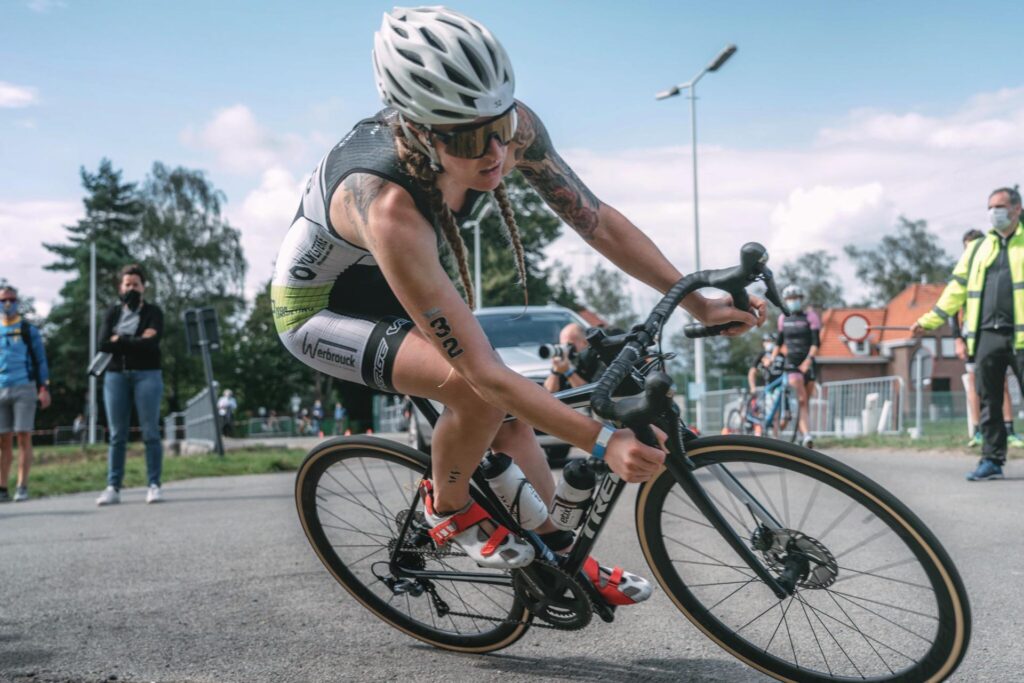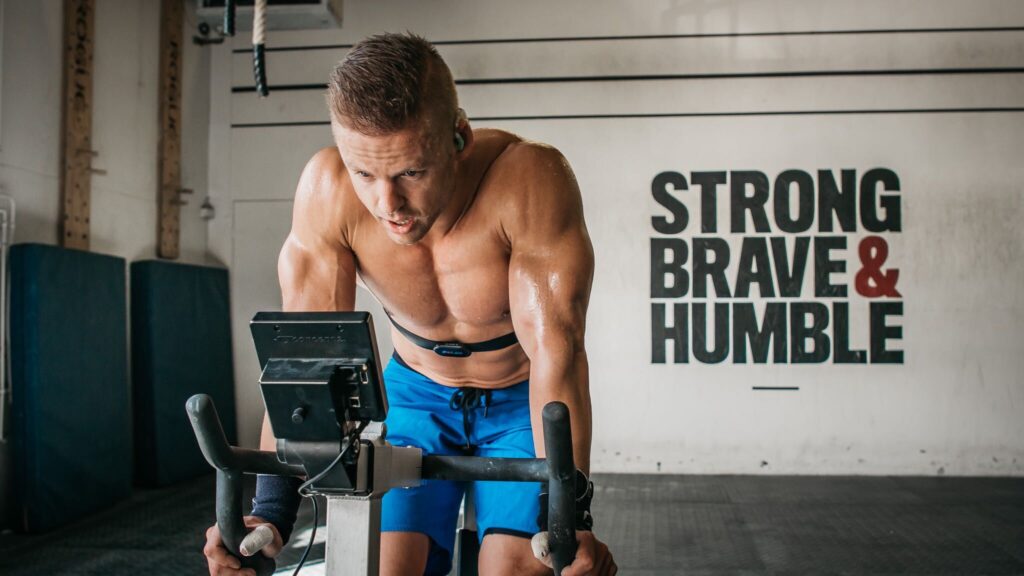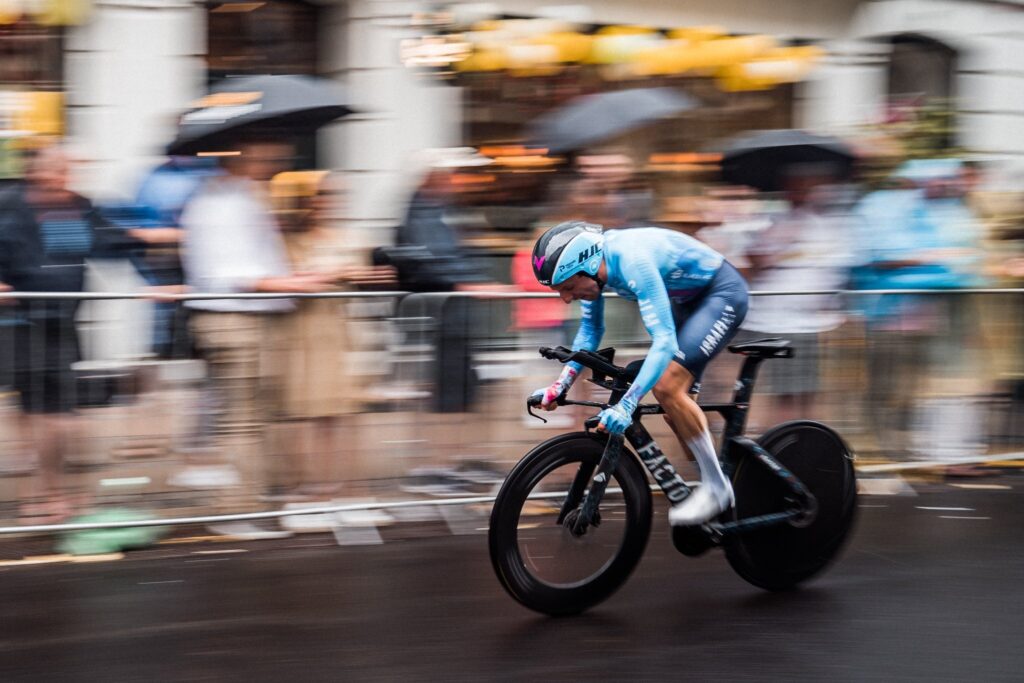The Ironman vital lung capacity training plan

Accomplishing an ironman is a dream for many. It is an ambitious goal that is often strictly regimented, and not something that you just do – an ironman is hard work! It requires both mental and physical preparation and training. It is a project that requires time, and therefore a good way to start is to follow a training plan. Your plan should include training not only for the three Ironman disciplines, but also for your inner motor, and your respiratory system.
You will find that many Ironman training plans solely focus on swimming, biking, running, and training. Yet, to perform well in all these three disciplines and to continuously increase your performance on each one, your vital lung capacity will be strong. Your lungs are the core muscles of your body, providing you with the energy and power needed. Moreover, If you know how to use and strengthen your breathing to your advantage, then you are already ahead.
Read further to catch the fundamentals of completing an Ironman and how vital lung capacity training should be part of your Ironman training plan.
What is an Ironman?
First of all, let us answer the most basic question. What is an Ironman exactly?
An Ironman is a very famous distance race within the popular sport of triathlon. A triathlon consists of swimming, cycling and running in this specific order. The first-ever Ironman took place in 1978 on Oahu, HI.
An ironman entails 3800 meters of swimming, 180 kilometers of biking, and lastly 42.192 kilometers of running. Only sports events created byWorld Triathlon Corporationare allowed to plan and call a triathlon in this form, an Ironman.
How long does it take to do an Ironman?
Each of the three disciplines and distances has a limit. Swimming has to be finished within 2 hours and 30 minutes while biking has to be finished within 10 hours and 30 minutes. The maximum time allowed to complete the whole Ironman is 17 hours.
The current Ironman record was set in Hawaii in 2019 by Jan Frodeno. His winning time was 7 hours, 51 minutes and 13 seconds.
Mental preparation
Mental preparation is a big part of training for an Ironman. To be mentally tough is a necessity. An Ironman is not for fun, and therefore, requires full focus. The ability to push yourself through the pain and to increasingly push the capabilities of your body is tough work.
There will be crises along the way, you should know that, but that is only normal. You need to believe in yourself and the capability of your body’s strength. Strong self-discipline and self-awareness with a sensible approach to your training will take you far.
Good ideas for mental preparation are to divide your training plan into bits where you set milestones for each. Also, to train and do workouts alone can help you focus.
Diet during an Ironman training plan:
Diet is a common question when addressing Ironman, but what you eat does not have the biggest relevance, you can eat relatively normal. As long as it is relatively healthy and includes a good combination of proteins, carbs, and fat. You can use gels, bars, and sports drinks while working out, especially if you plan to use these on the actual Ironman. These are easy options that provide you with fast energy. On the day of the race, you should be aware of getting a great amount of energy through carbs and also enough salt and water.
Why follow a training plan?
You need the patience to prepare for an ironman and by following a training plan you will have an overview to see the end goal – and why it takes time. It sets the best base for gradually increasing your training load.
You will maximize your potential and prepare yourself for a confident race, where training has not been rushed. A highly important factor is also that a training plan decreases your chance of injury.
To perform and finish an Ironman you have to be in great shape, which requires many training sessions. For many, it can be difficult to schedule in training within an already pressured daily life, where you have to take care of work, family, and friends. It is, therefore, a good idea to structure your preparation through a training plan.
Between 10 and 12 workouts per week is a good ground rule for your training plan. You will often need to do more than one workout per day to reach your goals. Therefore, try to form good training habits and identify your strengths and weaknesses early on. To not burn out quickly, remember to relax in between. It is quite a challenging task you have to perform, so it requires breaks and days off.
Vital lung capacity and Ironman
So, why would we write a post presenting an Ironman vital lung capacity training plan in the first place? The answer is quite simple. Your respiratory muscles are the most important muscles you need. While respiratory muscle training is an overlooked aspect, it has a great impact and can have a significant influence on your performance margins.
At Airofit, we work on the great impact that respiratory muscle training can have on your overall physicality and performance. By sending oxygen (fuel) to your muscles, it’s exactly our respiratory system which provides us with energy and power. That means by training your respiratory system we can increase your vital lung capacity, and as a result, your maximum oxygen uptake. Hence, you will be able to increase the amount of oxygen you provide to your muscles through each breath. This makes you last longer during a workout and thus improves your instant performance and energy. In other words, both your aerobic and anaerobic threshold is strengthened.
Swimming is the first step in an Ironman and swimming is a task that truly requires great amounts of oxygen intake which means every breath you take has to be taken very fast. Strengthening your respiratory muscles thereby helps to accomplish this task, which sets you off better as you continue into biking and running.

Phases in an Ironman training plan
Your training should change the closer you get to the Ironman since you are building your strength gradually. Therefore the training plan will serve the purpose of going through all these phases:
- Acclimation phase: Preparing your body for the training
- Base phase: Building an endurance baseline in all three sports (Focus on endurance and training at lower intensities)
- Build phase: Steadily increasing training volume and distance (Focus on including races in workout)
- Peak phase: Safely hitting maximum mileage ahead of the full race
- Race/taper phase: Recover of your body before the day of the Ironman
The last point, the taper phase, is a short period of reduced training that helps your body recover and compensate for the recent hard training. Read here for a detailed description of the taper phase.
We also recommend that you include a sixth phase to your training plan in order to build up your lung capacity. However, this should be implemented as an ongoing phase:
- Respiratory phase: The steady improvement of vital lung capacity and respiratory strength
Ironman training plan:
Depending on your time and experience, a good training plan will differ. But no matter what your starting point and previous experience are, you should consider these points:
Restitution:
- It is important to be aware of restitution. It requires a lot of experience to be able to know when your body is just sore or when you need to skip a workout. Restitution is important to avoid long-term injuries that can influence your ability to complete the Ironman. A day of rest per week is usually a good idea.
Combine workout forms:
- You will need to divide your training plan into swimming, biking, running, and working out, you should also try to combine them differently along the way.
Interval training:
- You also have to work on intervals, to increase endurance, speed, and your anaerobic threshold. This enhances your ability to perform longer and go faster, even when longer sprints when needed.
Gradually increase workout and respiratory training:
- Each week you should gradually increase the time spent on each workout by around 10%. That gives your body time to learn, adjust and to become increasingly stronger, which allows you to perform at a greater capacity.
The schedule
Our recommendation for an efficient and accessible training schedule comes from the Ironman webpage itself. You can find it here. You can also find longer and more extensive plans online, like this one for example. We recommend that you find a training plan that suits you and then combine it with a lung capacity training plan which you can see below.
Vital lung capacity Ironman training plan
By training your respiratory muscles along with the rest of your ironman training plan, you will experience that you gradually become more focused and aware of your breathing. And this enables you to take longer and deeper breaths, without extra effort.
Doing so means that your vital lung capacity will increase and that you can inhale more oxygen per breath. You can take fewer breaths and have greater amounts of oxygen available to your muscles. You will experience that you do not lose breath as fast as you used to.
As a starting point, you can follow these guidelines when training your breathing:
- Inspiratory muscle training is performed in a relaxed seated position
- Train 2-3 times per day, preferably in the morning and evening.
- Train for around 5-10 minutes per day
Furthermore, we have outlined the vital lung capacity training here so you can follow it alongside the rest of your Ironman training plan. As you can see, you will increase your respiratory training every two months – no matter the length of your full training plan.
Six months to go:
Workout:
- Monday: 1-hour swim
- Tuesday: 1-hour cycle
- Wednesday: Day off
- Thursday: 45-60 minutes of running
- Friday: 1-hour swim
- Saturday: 1-hour run
- Sunday: 2-3 hours cycle
Vital lung capacity training:
- 5 minutes in the morning before a workout
- 5 minutes in the evening after a workout
Four months to go:
Workout:
- Monday: Day off
- Tuesday: 1.5-hour cycle and 1-hour run
- Wednesday: 1-hour swim
- Thursday: 1.5-hour cycle and 1-hour run
- Friday: 1-hour swim
- Saturday: 3-4 hour cycle and a 15 min. run off the bike
- Sunday: 40 minute ocean swim and 1.5-hour run
Vital lung capacity training:
- 5 minutes in the morning before a workout
- 5 minutes midday in between workouts
- 5 minutes in the evening after a workout
Two months to go:
Workout:
- Monday: Day off
- Tuesday: 2-hour cycle and 1-hour run
- Wednesday: 4 km swim
- Thursday: 1.5-hour cycle and 1.5-hour run
- Friday: 1-hour swim
- Saturday: 6-7 hour cycle and 10 min. run off the bike
- Sunday: 45 minute ocean swim, 1-hour cycle and 1-hour run
Vital lung capacity training:
- 10 minutes in the morning before a workout
- 5 minutes midday in between workouts
- 10 minutes in the evening after a workout
If you want to learn more about the physics behind respiratory training and how you can more specifically train your breathing, we have written a blog post on the topic – Find it here.






